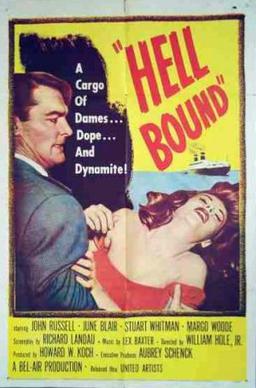 Outlaw Tom Sabin (James Craig) rides into Purgatory, a frontier town that is so dangerous that even the welcome sign warns that those entering should say goodbye to God.
Outlaw Tom Sabin (James Craig) rides into Purgatory, a frontier town that is so dangerous that even the welcome sign warns that those entering should say goodbye to God.
The townspeople take one look Tom and hire him to clean up the town. The town is controlled by a ruthless saloon owner named Hoag (Paul Richards). Hoag is a self-styled intellectual and a dangerous man but he is considered to be untouchable because he is crippled and no one wants to be known as the person who shot a man in a wheelchair. Instead, they would rather hire a stranger to do it for them but Tom has more honor than they originally realized.
Hoag summons three gunmen to kill Tom. Two of the gunmen prove to be no match for Tom but then he meets the third and is shocked to discover that it’s his own brother, Johnny Naco (Brett Halsey).
Four Fast Guns is a better-than-average B-western. What sets it apart from other films about strangers being hired to clean up a town is that the characters are portrayed with more depth than usual. The towns people are not innocent victims but instead want to pay Tom to take the risks and do the dirty work that they’re not willing to do. Tom is not a cut-and-dried hero and the gunmen who are hired to kill him are not portrayed as being one-dimensional villains. Johnny Naco may be a killer but he also has a code of honor. He may be willing to kill his own brother but he’s not willing to see him humiliated. The wheelchair-bound Hoag is himself a more interesting bad guy than usually shows up in movies like this. He’s the type of bad guy who quotes Dickens and Whitman while waiting for his hired guns to do their job. Hoag feels that his cultured background sets him above the rest of the town’s rabble but he ultimately proves himself to be just as petty as those that he looks down on.
Four Fast Guns feels like a forerunner to the morally ambiguous Spaghetti westerns and films like Clint Eastwood’s Unforgiven. It is essential viewing for fans of the genre.


